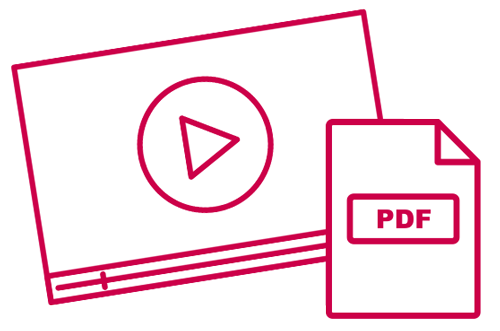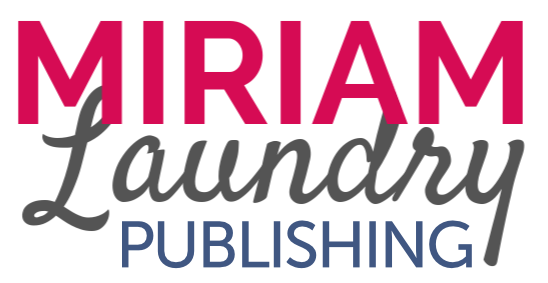Every writer fears the blank page. (I got shivers just from typing that out.) But, even if the blank page feels impossible to overcome, you can rest assured that it won’t hold you hostage anymore. In this blog, you’ll discover why the blank page keeps us stuck, how to unstick from it, and how to write a picture book in just one week’s time.
Want to jump right to the schedule? Click HERE.
The Blank Page: Stuck to Unstuck
How the Blank Page Stops Us in Our Tracks
The blank page’s power lies in procrastination and fear.
Let’s be honest, sitting down and writing is a lot of mental effort. Taking all those ideas that have been swirling around in your head for days, weeks, months, maybe even years, and recording them in a tangible way is not easy.
Because this is such a taxing process, we often delay starting as long as possible. The blank page uses procrastination to stop us from being able to write a picture book.
Then, when we finally get the motivation to write, we still feel like it’d be easier to climb Everest! Why?
Because we’re afraid. Afraid our writing won’t sound good enough, that our ideas won’t work on the page, that children won’t love what we write, or something else.
How to Unstick Yourself from the Blank Page
So, what can we do about it? We can follow in the footsteps of those who have done it before. We can follow an outline.
Instead of trying to reinvent the storytelling wheel and write a picture book without any guidance, we need to follow a process that makes writing easier (to address procrastination) and that’s been proven to work before (to address fear).
As a five-time bestselling author who has both self- and traditionally published, I want to share my outline with you (and fast-track it) so you can overcome the blank page, get a first draft in your hands, and make instant progress in your dream of becoming an author.
Interested in Writing a Children's Book?

Write a Picture Book in 1 Week: Day-by-Day Schedule
Day 1: Identify Your Why
Before you put pen to paper, you need to understand why you want to write a picture book. What is motivating you? It could be to…
Inspire readers
Make a difference in children’s lives
Generate passive income
Create fame
Other
But, don’t just think about your why from the surface. Dig deep. Do you want to write for children because…
You loved books as a child and want to give the next generations that same feeling
A book taught you a life lesson that changed your life for the better
Generating passive income will free up more time for you to spend with family and friends
For too long you let your voice take the back seat, and now it’s time to show people who you are & what you bring to the world
Once you’ve identified your why, write it down and paste it somewhere you’ll see it every day. Never let yourself forget your why — it’s going to get you through all the highs and lows.
Want to think more like a writer? Check out THIS article.
Day 2: Decide on a Message
Now that you know why you want to write a picture book, it’s time to decide what the message of your story will be. Do you want your story to help children become more…
Confident
Empowered
Independent
Knowledgeable
Joyful
And so on…
Just like Day 1, let’s dig even deeper. Try to take that message and turn it into a statement — something you want readers to understand by the end of your story.
Examples include:
I can do anything I set my mind to.
Anyone can make a difference, no matter their age.
Forgiveness is greater than grudges.
Everyone should be treated with respect, no matter where they come from.
Once you’ve articulated a message for your story, note it somewhere. You’ll need it for Day 3!
Need more inspiration? Check out THIS article about How to Pick the Best Book Idea for Your Children’s Book.
Day 3: Create a Main Character
When you write a picture book, you need to know who your main character is — they’re the vehicle for your story.
Character + Problem = Story
As you create your main character, you’ll want to know their basic traits such as…
Age
Ethnicity
Appearance
Beliefs
Temperament/Personality
Likes & Dislikes
Then, you can get even more detailed. You might note their…
Mannerisms
Pet peeves
Vocabulary
Habits
Etc.
Finally, you want to consider how your character will discover the message you articulated during Day 2.
For example, if your story is about teaching children to believe in themselves, you’ll want to start with a character who doesn’t believe in his/her self. Then, the main character will go on to discover the message and show readers that they can learn to believe in themselves too!
Remember, no person is perfect. When you give your main character flaws or insecurities, you make them more relatable and more enticing for children.
Want to create characters children LOVE? Check out THIS article.
Day 4: Present a Problem
Remember how, when we write a picture book character + problem = story? Well, now that you have your character figured out, it’s time to present that character with a problem.
Like I mentioned above, your character should struggle with something that correlates to the message you’re trying to convey. When I’m planning a story and need to invent a problem for my character to overcome, I use the opposite of the message.
For example:
(message) You can believe in yourself → (problem) Character doesn’t believe in him/her self.
(message) You can make a difference → (problem) Character doesn’t know how to make a difference.
(message) You can be your authentic self → (problem) Character feels insecure about who he/she is.
If your subject matter is more serious, I encourage you to read THIS blog I posted about Writing Difficult Topics in Children’s Books.
You’ll also want to think about how this problem will be revealed in the story, also known as the inciting incident or call to action. This is the moment your character’s adventure begins. (Think of Peter Parker getting bitten by a radioactive spider — the adventure has started!)
Day 5: Develop the Roadblocks/Checkpoints
If you think of a picture book like a hamburger, consider this the “patty” of the story. This is where all the substance comes from.
When you write a picture book, you need to show how your main character grows and learns gradually. Your character should be one step closer to resolving the problem with every flip of the page. To help plan this gradual learning process, I like to break the “middle” of my story into three roadblocks or checkpoints.
A roadblock is something that stands in the character’s way. It is preventing them from achieving their goal.
A checkpoint is something that the character learns/discovers. It brings them closer to achieving their goal.
Whether your story uses roadblocks, checkpoints, or a combination depends on your unique message, character, and tone. Regardless, each roadblock/checkpoint should help your character grow in some way (all of this growth will eventually culminate at the story’s end).
For example, in I CAN Believe in Myself, the main character (Molly) struggles with her confidence. The problem is introduced (inciting incident) when Molly’s teacher announces that she’ll have to speak in front of the class. Molly thinks to herself, I can’t do it!
Here are the roadblocks/checkpoints Molly faces:
First, she sees her friend Maria struggling to swing, saying “I can’t swing by myself”. Molly first sees how insecurity is holding her friends back.
Second, Molly sees her classmate Andy struggle to climb across the monkey bars. Just like Maria, he claims he can’t do it, and Molly once again notices the impact of insecurity.
Lastly, Molly hears Emily crying because she can’t tie her shoelaces. Molly has a realization — she has been doing the same thing!
With every event that passes, Molly learns a little more about the problem she’s facing, eventually to discover how she can overcome it! Brainstorm ways you can show your main character slowly grow and learn, enabling them to solve the problem by the end of the book.
Which brings us to Day 6…
Day 6: Pick a Satisfying Ending
This is the final day of planning before you write a picture book! On Day 6, you want to create a satisfying ending for your reader.
Think of something that will leave them with a smile. You might…
End with a heartwarming statement or scene
Circle back to reference something that happened earlier in the story
Use humour
However, you don’t want to let this part bog you down. If you’re struggling to think of a satisfying end to your story, read other picture books and see how they do it. Then, you’ll find the inspiration you need.
Day 7: Craft Your Story
You’ve done all the planning and outlining. Now it’s time to write a picture book! Set aside a morning, afternoon or evening and put all these pieces together into a cohesive story.
Since you’ve already brainstormed your ideas, it should be much easier to face the blank page. And if your mind tries to stop you, remember your why. Before you know it, it’ll be time to research editors and publishers! You CAN do it!
Not sure how to format a manuscript for submissions? Check out my manuscript formatting guide HERE.
Interested in Writing a Children's Book?

